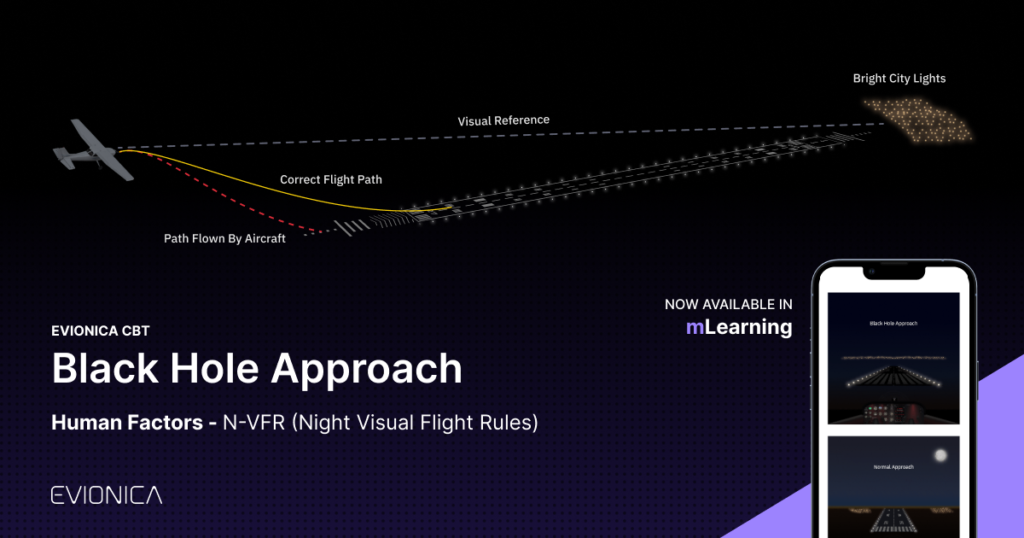Black hole approach – learn more with Evionica’s e-learning for Night VFR
Flying at night demands mastering night visual flight rules and requirements, human factors, meteorology, and abnormal operation at night. With the Night Rating course, students familiarize themselves with night flight techniques, flight planning, and navigation at night.
During the Night Visual Flight Rules course, pilots in training are introduced to different topics that concern flying at night. Human factors and illusions are some of the key concepts to understand, to be fully prepared for N-VFR practical flight training.

N-VFR – illusions at night
We would like to discuss one of the most dangerous illusions at night – the black hole approach. Normally, when approaching to land, you can use external references to judge whether you are on the correct path for landing. When it comes to night flying, however – it becomes more and more difficult as the references are often no longer visible. If you find yourself arriving at a lit runway that is not surrounded by any visible references, for example: an aerodrome over a body of water or unlit terrain, it is especially difficult to ensure the correct alignment of the aircraft on the glide path. You may get the feeling of the runway being out of position – either being tilted to the side or up or downsloping.
Flying at night – two types of black hole approaches
We can identify two different types of black hole approaches. The first concerns a bright runway, with high-intensity approach lighting systems, yet with little to no lights illuminating the surrounding terrain, and a night with no stars nor moonlight. In such a situation, you may perceive an illusion of being closer to the runway than you actually are. This usually results in flying a higher approach. The second one, which can result in an especially dangerous situation, is when approaching a runway with no approach lighting system, with complex city lights on high terrain in the distance beyond the runway. In such a case, there is a tendency to fly a lower-than-normal approach, with the possibility of a controlled flight into the terrain.
Night VFR course both in m-learning and e-learning versions
To mitigate the dangers associated with illusions in flight, the pilots have to maintain good situational awareness and knowledge of the terrain, as well as the human limitations coming from illusions. In our distance learning N-VFR courses, which are available as both m-learning (mobile or tablet) and e-learning (desktop) versions, you will find thorough explanations of the dangers associated with black hole approaches and much more – all accompanied by visuals that help you understand the concept of black hole approaches better, and providing you with a firm grasp of what you could expect when making an approach like that yourself.
Evionica is constantly improving e-learning for pilots, check out other courses:

